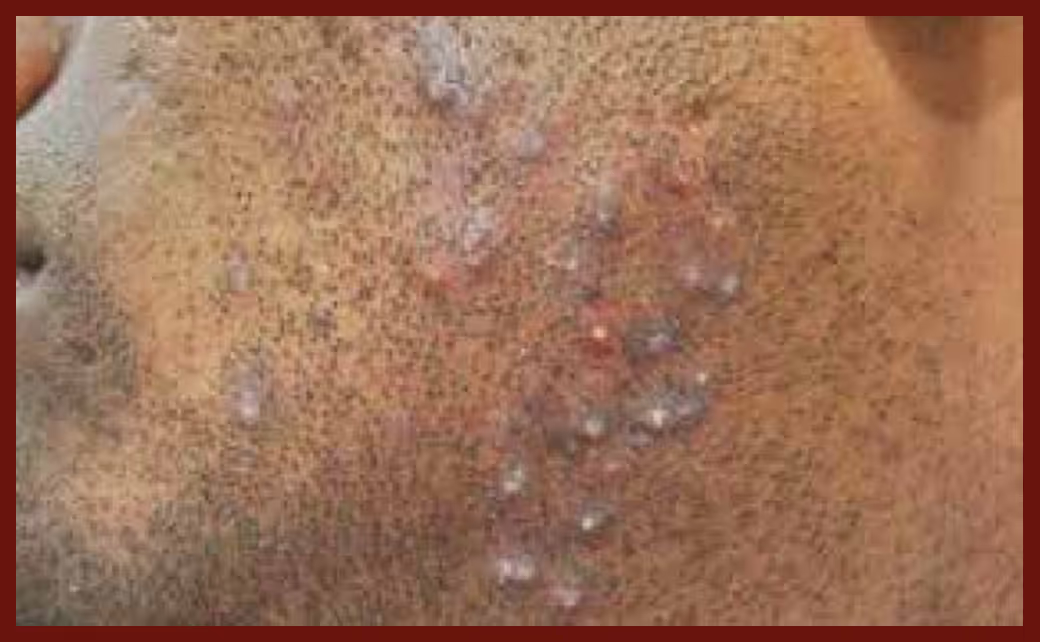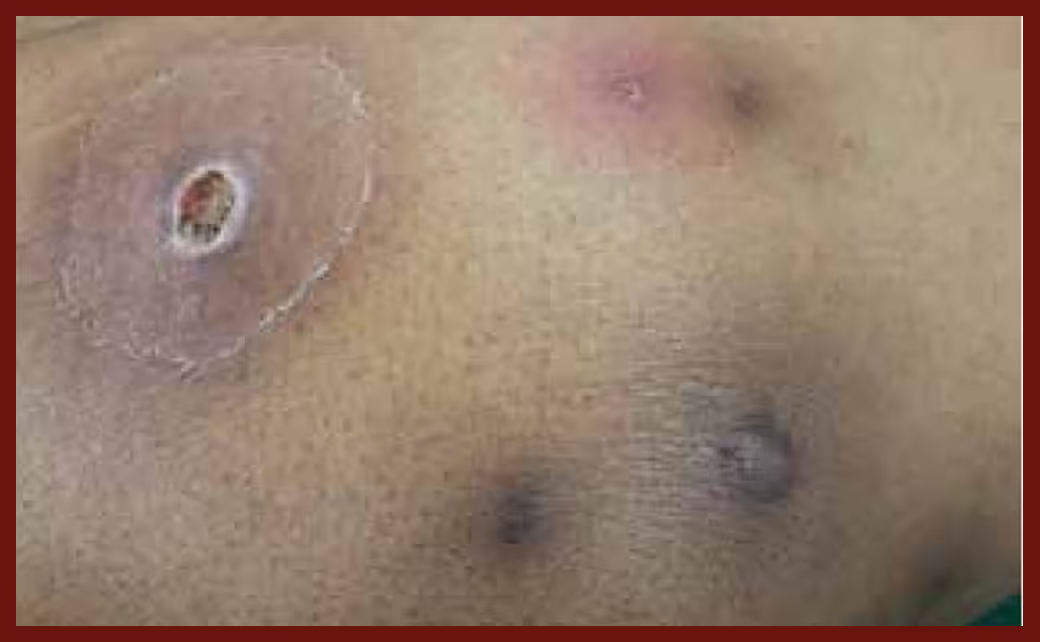Painful swelling involving the hair is commonly known as boil or folliculitis. If it occurs more than three times in a year, it is known as recurrent folliculitis.

Folliculitis occurs when the bacteria called Staphylococcus aureus causes infection of the hair follicle.
The infection is transmitted by direct skin contact with infected person or by sharing objects of daily use (fomites).
High temperature, overcrowding humidity and occlusive atmosphere predisposes to development of folliculitis. (environmental factors).
The predisposing factors for recurrent folliculitis include certain diseases such as diabetes mellitus, HIV infection, anaemia, kidney disease, atopic dermatitis or patients who are on steroids or anticancer drugs are high risk for development of recurrent folliculitis. (host factors).
The bacteria colonize certain body areas such as nose, underarms, groin and these are carrier sites from where the recurrent infections can be triggered.
The infection is transmitted by direct skin contact with infected person
or by sharing objects of daily use (fomites).
High temperature, overcrowding humidity and occlusive atmosphere predisposes to development of folliculitis.(environmental factors).
The predisposing factors for recurrent folliculitis include certain diseases such as diabetes mellitus, HIV infection, anaemia, kidney disease, atopic dermatitis or patients who are on steroids or anticancer drugs are high risk for development of recurrent folliculitis. (host factors).
The bacteria colonize certain body areas such as nares, axilla, groin and these are carrier sites from where the recurrent infections can be triggered.
Folliculitis appears initially as a painful red area involving the hair follicle or the area around it; it may be filled with pus and is usually painful or has a burning sensation.
In severe cases, the infection may spread deeper and to surrounding tissue and may cause a painful swelling. This is termed furunculosis.

Consult a dermatologist since it can be easily diagnosed on history and the clinical appearance of the lesions.
Diagnosis is usually done by dermatologist based on clinical features.
If needed, swab from the centre of the lesion or pus discharge can be subjected to laboratory tests to confirm the diagnosis and identify the causative organism by microscopy and culture.
Culture for detecting the sensitivity of organism to various antibiotics is mandatory.
Recurrent folliculitis is treated with oral antibiotics and topical treatments for decolonization of bacteria and surgery may be required in severe cases.
Oral antibiotics as prescribed depending on the weight and other clinical factors.
Antibiotics once prescribed should be taken for as long as prescribed and should not be stopped by self, as it leads to increase in resistance.
Inform the doctor about allergy with antibiotics if any. Antibiotics can result in gastrointestinal upset or rash, consult the dermatologist in case of any such complaints.
Bacteria colonize certain parts of the body like nares, axilla, groin, oral cavity and reduction in population of bacteria is very important to reduce the recurrence of folliculitis.
Oral antibiotics as prescribed depending on the weight and other clinical factors.
Application of 2% mupirocin cream twice daily in nares, axilla, groin. Chlorhexidine mouthwash thrice a day.
Daily body washing with chlorhexidine soap.
Incision and drainage may be required in severe cases.
Few simple measures can be adopted to prevent Recurrent folliculitis.
Take and apply your medicines regularly and for the adequate duration. Maintain good hygiene.
Pat yourself dry carefully after taking bath.
Take care when shaving and prevent nicks or cuts.
Handwashing is very important to prevent spread of Recurrent folliculitis. Control your blood sugar.
Reduce your body weight and exercise regularly.
Don’t self-medicate.
Don’t share your towel, use public bath, clothing with others till you are cured.
Disclaimer: This article is only for general patient information and is not intended for self medication. There is no legal liability of IADVL arising out of any adverse consequence to the patient. Subsequent to its use for self treatment of the disease images adjust for the depiction of the condition and is not to be used for any other purpose.
Explore articles in this section to gain a deeper understanding of various skin diseases and conditions. Each article provides detailed information on symptoms, causes, and treatment options, helping you to manage and address these dermatological issues effectively.

Psoriasis is a skin condition where new skin forms at a faster rate, showing up as red rashes with whitish scales, commonly over elbows, knees, and other body parts.

Dandruff is a common scalp condition in which small pieces of dry skin flake off from the scalp and is usually associated with itching. The exact cause of Dandruff and Seborrhoeic Dermatitis is unknown.

Dermatophyte infection is a superficial fungal infection of skin, hair and nails. It is also known as ringworm. In Hindi it is termed as Daad and in Marathi it is termed as Gachkaran.